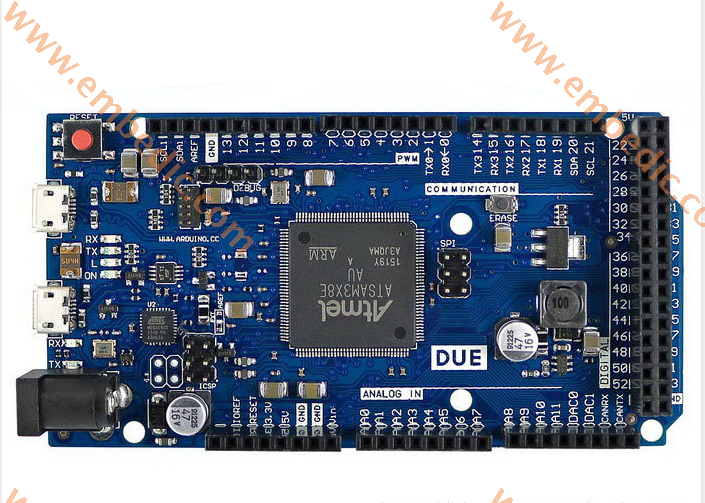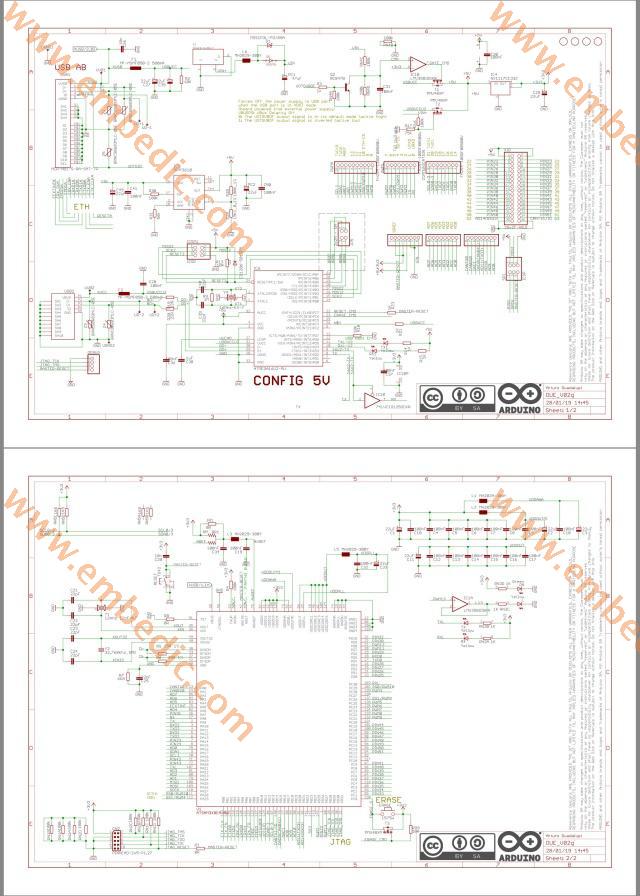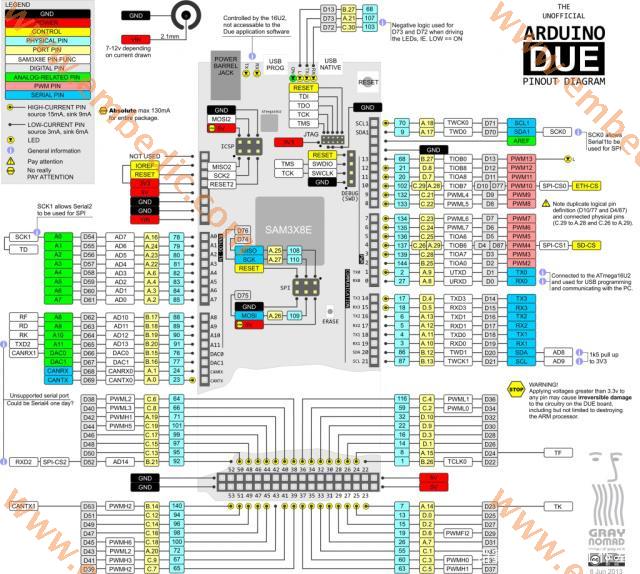Most of the design arrangements for each version of Arduino are based on the use of 8-bit AVR series microcontrollers (developed by Atmel in San Jose, California), except for the Arduino Due, which is equipped with an ARM Cortex-M3 32-bit processor, it is the first Arduino board based on a 32-bit ARM core microcontroller. It has 54 digital input/output pins (12 of which can be used as PWM outputs) and 12 analog inputs.
Figure 1: Front view of Arduino Due;

Figure 2: Arduino Due schematic diagram;

One of the most famous devices in this series is SAM3X8E, Atmel's Smart ARM microcontroller. For the platform to get started with SAM3X8E, you can choose the Arduino Due development board (also called Arduino ARM. SAM3X8E MCU is an ARM Cortex-M3 processor that can run at 84 MHz, 512 KB flash memory and 100 KB SRAM. They also have a wealth of on-chip Peripherals, such as high-speed USB MiniHost and on-chip PHY, Ethernet, dual CAN, high-speed SD/SDIO/MMC and multiple serial interfaces (USART, SPI, TWI (I2C) and one I2S).
Main parameters of Arduino Due:
Microcontroller: AT91SAM3X8E
Working voltage: 3.3V
Input voltage (recommended): 7-12V
Input voltage (limit): 6-16 volts
54 digital I/O pins (12 of which provide PWM output)
Analog input channel : 12
Analog input channel: 2 (DAC)
Total DC output current on the I/O line: 130 mA
3.3V port output: capacity 800 mA
5V port output : capacity 800 mA
Flash: 512 KB all space can store user program
SRAM: 96 KB (two storage areas: 64KB and 32KB)
Clock speed : 84 MHz
Length: 101.52 mm
Width: 53.3 mm
Weight: 36 grams
Figure 3: Schematic diagram of Arduino Due pins;

Warning: Unlike most Arduino boards, the voltage of the Arduino Due board is 3.3V. The maximum voltage that the I/O pins can withstand is 3.3V. Applying a voltage higher than 3.3V to any I/O pin may damage the circuit board.
Manufacturer: Texas Instruments
IC MCU 16BIT 15.5KB FRAM 32VQFN
Product Categories: 16bit MCU
Lifecycle:
RoHS:
Manufacturer: Texas Instruments
IC DSP FIXED POINT 737FCBGA
Product Categories: DSP
Lifecycle:
RoHS:
Manufacturer: Microchip
IC MCU 8BIT 64KB FLASH 40UQFN
Product Categories: 8bit MCU
Lifecycle:
RoHS:
Looking forward to your comment
Comment